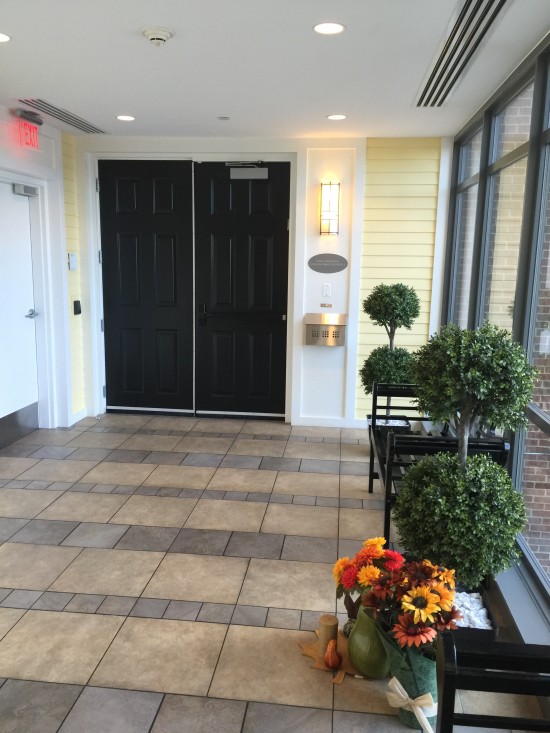Category: Customer service
Posted by Dr. El - July 19, 2016 - Business Strategies, Communication, Customer service, Engaging with families, McKnight's Long-Term Care News, Motivating staff

Here’s my latest article on McKnight’s Long-Term Care News:

![]()
A friend of mine called me this week, upset about the racial tension making headlines in the news. We discussed what we could do as individuals to improve the situation.
“I called a friend of mine of a different race,” she said. “I told him we need to stay in touch right now, even if we’re busy.”
“My column this week is about the issue,” I responded. We talked about how differences are bridged in a healthcare environment.
In long-term care, we provide services to, and work with, individuals from backgrounds different than our own. Residents share rooms and break bread with types of people they may never have encountered more than superficially in their previous 80 years of life. Barriers recede when we come to know each other as people, yet it’s not always a smooth road.
Studies of racism in LTC
I’ve observed firsthand various culturally charged interactions — both positive and negative — and I wondered what types of racial challenges are common in long-term care.
I turned to the research to see what’s been studied formally and found that racism is observed in the following ways:
• Residents refusing care based on the racial or ethnic group of the caregiver, as noted in the New England Journal of Medicine article, “Dealing with Racist Patients.”
• Unpleasant work environments due to hearing racial remarks by family members or other workers, in “Racism Reported by Direct Care Workers in Long-Term Care Settings.”
• Nursing homes in areas with high poverty being more likely to close: “Why Medicaid’s Racism Drove Historically-Black Nursing Home Bankrupt.”
• The changing demographics of nursing homes due to people from minority groups having increased entrance to that level of care, but reduced access to privately paid home and community-based care such as assisted living: MedicareAdvocacy.org, “The Changing Demographics of Nursing Home Care: Greater Minority Access…Good News, Bad News.”
Increasing inclusion
While some of these problems are beyond the scope of any one LTC organization, there are ways in which the first two points can be addressed within our communities:
For the entire article, visit:

Posted by Dr. El - July 14, 2016 - Books/media of note, Business Strategies, Customer service, Resident education/Support groups, Something Good About Nursing Homes

Food for thought in this New York Times article:
By WINNIE HU
JULY 12, 2016
When Audrey Davison met someone special at her nursing home, she wanted to love her man.
Her nurses and aides at the Hebrew Home at Riverdale did not try to stop her. On the contrary, she was allowed to stay over in her boyfriend’s room with the door shut under the Bronx home’s stated “sexual expression policy.” One aide even made the couple a “Do Not Disturb” sign to hang outside.
“I enjoyed it and he was a very good lover,” Ms. Davison, 85, said. “That was part of how close we were: physically touching and kissing.”
Ms. Davison is among a number of older Americans who are having intimate relationships well into their 70s and 80s, helped in some cases by Viagra and more tolerant societal attitudes toward sex outside marriage. These aging lovers have challenged traditional notions of growing old and, in some cases, raised logistical and legal issues for their families, caretakers and the institutions they call home.
Nursing homes in New York and across the country have increasingly broached the issue as part of a broader shift from institutional to individualized care, according to nursing home operators and their industry groups. Many have already loosened daily regimens to give residents more choice over, say, what time to bathe or what to eat for dinner. The next step for some is to allow residents the option of having sex, and to provide support for those who do.
For the entire article, visit:

Posted by Dr. El - June 8, 2016 - Communication, Customer service, End of life, McKnight's Long-Term Care News, Resident care

Here’s my latest article on McKnight’s Long-Term Care News:

![]()
Assistance in creating a “good death” is a fundamental task of any organization working with elders and may be addressed by a number of team members singly or in combination. Since these discussions are often easier said than done, I thought it might be helpful to share some of my experiences since I, as a geropsychologist, regularly discuss dying with residents and their families.
It’s a more-than-timely topic. As I once wrote in my column, “Creating better deaths in long-term care,” end of life care has been the subject of increased media attention in recent years. The importance of a conversation or series of conversations about the resident’s wishes has been emphasized by organizations like The Conversation Project and writers such as Atul Gawande, M.D. in his bestselling book, “Being Mortal.”
Here’s some added perspective. Not too long ago, I was checking the medical orders in a long-term resident’s chart when I noticed that she was “full code.” Bernice was 92 years old with a history of chronic illnesses and a recent decline in functioning.
While many residents have advance directives that prohibit care in the event that breathing or the heart stops (such as a Do Not Resuscitate order), full code allows for all interventions needed to restore breathing or heart functioning, including chest compressions, a defibrillator and a breathing tube.
I thought of the distraught expressions on the faces of the nurses who had rushed to provide full code care to Jim, a frail elderly man who’d been a staff favorite during the course of his stay. The full code was at the insistence of his son, who couldn’t bear the thought of his dad’s passing. Jim’s ribs were cracked, the effort was unsuccessful and the nurses were devastated – at having to perform the procedure, not because Jim had died. It was obvious to everybody in the nursing home that Jim had been dying for months despite his son’s desire to forestall the inevitable.
Mindful of Jim’s painful demise, I raised the issue of advance directives with Bernice, asking her if she knew what “full code” meant and if she’d given any thought to how much medical treatment she wanted at the end of her life.
“What will be, will be,” she told me. “I don’t want to talk about it.” Her tone made it clear that persistence would be futile.
“There’s a lot more to it than that,” I replied, “but we don’t have to talk about it today.” I made a mental note to pursue the topic when she seemed less inclined to throw me out of her room.
For the entire article, visit:

Posted by Dr. El - May 10, 2016 - Business Strategies, Customer service, McKnight's Long-Term Care News, Resident care

Here’s my latest article on McKnight’s Long-Term Care News:

![]()
Studies show there will be an increasing number of people on dialysis in the coming years. It’s likely many of them will be in long-term care.
There is much that can be done to improve the quality of life for these individuals and to showcase your facility as dialysis-friendly. Unfortunately, many providers are not doing all they can to help these people, or boost their own business operations, for that matter.
New diagnoses of end-stage renal disease (ESRD) in residents should prompt a team discussion with them and their families about wishes for end-of-life care (see Dialysis: Gauging its need, and how to reduce its stress). Some may prefer to avoid dialysis, but many of the newly diagnosed will choose to begin dialysis treatments. In addition, most facilities already have residents committed to the ongoing process of dialysis.
To understand how to best improve care, let’s consider what life is currently like for many hemodialysis patients in long-term care.
A week in the life …
Most people undergoing hemodialysis leave their LTC facility three days a week in order to receive treatments that last for about 3 ½ to 4 hours. In the case of James, for example, he is awakened at 6:30 a.m. to get ready for a 9 a.m. pickup for a 10 a.m. dialysis appointment. He spends the day dozing on and off in front of the television while hooked up to the dialysis machine. By 2 p.m., he’s disconnected from the machine and has a 2:30 p.m. pickup time that sometimes doesn’t happen until 3 p.m. He’s back at the facility by 4 p.m.
Not surprisingly, James and other residents are frequently fatigued on the days in between treatments, making it less likely they’re able to participate in rehab or in the life of the LTC community.
A typical dialysis patient has interacted for hours with an entirely different staff that generally has little contact with the facility care team. They’ve been on an ambulette dealing with various personalities in close quarters (and possibly in traffic or bad weather) and it’s likely that lunch was a renal diet sandwich eaten while being dialyzed.
Considered from a “patient experience” perspective, the bar is set pretty low and there’s a lot we can do to raise it.
For the entire article, visit:

Posted by Dr. El - March 29, 2016 - Business Strategies, Customer service, Inspiration, McKnight's Long-Term Care News, Money Issues, Resident care, Something Good About Nursing Homes, Volunteering

Here’s my latest article on McKnight’s Long-Term Care News:

A few months ago, I was consulting at the Margaret Tietz Nursing and Rehabilitation Center in Jamaica, NY, when a remarkable woman named Trudy Schwarz walked down the hall. Her noteworthy qualities were obvious in several ways.
A diminutive woman, she nevertheless was pushing a sizable rolling metal cart filled with all manner of neatly arranged goods. This was despite being as old or older than many of the residents at the facility.

She exuded a calm, pleasant demeanor enhanced by her smile and her peach-colored lab coat as she purveyed merchandise from what I’ve previously termed an “independence cart,” an essential yet rare enterprise in long-term care.
“Trudy’s here!” exclaimed the resident I’d been speaking with, excusing herself for a moment to exchange a few dollars for a bottle of lotion. “She buys me the things I can’t get here. She’s a real lifesaver.”
It was a sentiment I heard echoed by many other residents over the next few months.
Overcoming systems failure
An “independence cart” is a small store on wheels that brings goods to residents. While many residents have personal needs allowances and therefore a small amount of money for purchases, it’s virtually impossible for many frail elderly to spend it due to a systems failure within long-term care communities.
Residents generally have no access to a store unless it’s one that visits their facility or they’re physically able to go off-campus with a family member or as part of a staffed excursion. Social workers are usually too inundated with other tasks to assist with online purchases and most residents don’t have access to a credit card, debit card or PayPal account necessary for web-based transactions anyway. Residents without family members to make purchases on their behalf are left to ask for help from staff members who sometimes assist them out of kindness — but against facility policy.
The psychological impact
For the entire article, visit:
Posted by Dr. El - February 16, 2016 - Business Strategies, Communication, Customer service, McKnight's Long-Term Care News, Resident care, Technology

Here’s my latest article on McKnight’s Long-Term Care News:

In “A potential lawsuit in every worker’s pockets?”, McKnight’s Editorial Director John O’Connor describes two of many recent incidents of long-term care workers using their cell phones to record residents in embarrassing situations and post the photo or video to social media.
Despite leading to termination of employment and lawsuits, some of the employees involved appear to have no idea that this behavior is a serious ethical breach. Staff writer Emily Mongan offers the following quote in her article on this topic: “They just blew everything out of proportion,” [the offending employee] said. “It was just a picture of her butt.”
Wondering how an employee could possibly think posting a photo of a resident’s behind to social media would be a reasonable action to take, I contacted psychologist and social media expert Keely Kolmes, PsyD , to find out.
Changing expectations of privacy
Dr. Kolmes notes that it’s become commonplace for people to record moments from their lives and post them to social media, generally without consent from others who might be captured in the photos or videos that are shared.
For example, while I get my daughter’s permission before I post anything about her to my private Facebook page, I occasionally find her featured in photos with friends on their pages without prior approval. Posting friendly pictures is considered acceptable in one’s personal life (and a parent who asks permission from their child is, I suspect, unusual).
One might argue that there’s a distinction between personal and professional situations, yet similar situations frequently occur in professional settings as well, such as discovering you’ve been featured in a photo on the website of an organization after attending their conference or on your facility website after the holiday party.
Most people are pleased to be highlighted in such photos, but if an organization expects employees to follow their social media policy, these situations are a prime opportunity to show workers that the policy is being followed at the corporate level as well. At facility events, for instance, notify staff members that photos will be taken and may be posted.
Resident/staff boundaries: Whose life/home is it?
For the entire article, visit:

Posted by Dr. El - February 2, 2016 - Business Strategies, Customer service, Depression/Mental illness/Substance Abuse, Inspiration, McKnight's Long-Term Care News, Resident education/Support groups

Here’s my latest article on McKnight’s Long-Term Care News:

We often think of culture change as a formal process initiated by company leaders that involves setting organizational goals and moving employees in big and small ways toward those goals.
But culture change also can be a grassroots effort that shifts the dynamics between residents, staff and community, one unit at a time.
Altering expectations
As a psychologist, I’ve been trained to observe the interactions of groups of people. The current dynamics of many long-term care settings involve residents who are in the passive role of “recipients of care” while the staff members are in the active role of “providers of care.” The residents are frequently isolated from each other and from the community outside the facility. They feel bored and useless, leading to depression.
Leaders in the culture change movement, the Eden Alternative calls loneliness, helplessness and boredom the “three plagues” of long-term care. Its aim is to eliminate these plagues through transforming the culture of the facility. Another culture change resource, the Pioneer Network, refers to the need for elders to have, among other things, “purposeful living.”
These organizations and others offer tried-and-true paths to alter the dynamics of your facility, but not every setting is ready for them yet. If you’re working in a culture-change-resistant organization and find yourself yearning for a way to make a difference — today — consider the possibilities here.
Grassroots culture change ideas
• Purposeful pursuits such as knitting and crocheting
As part of a therapeutic recreation program, these crafts can dramatically shift the dynamics noted above, especially when the needlework has a point. (Sorry, I couldn’t resist!) Residents who are working together to make lap blankets for new residents or hats for premature infants change from being passive recipients of care to active providers of care for others within the facility and in the larger community. Industrious and engaged residents show workers that elders can contribute to the world despite their age and physical or mental limitations. (For more on this, see the Recreation audios on my website. For more on therapeutic knitting, visit stitchlinks.com.)
• An active welcoming committee
Entering long-term care is very stressful for newcomers and an effective welcoming committee is an excellent way for long-time residents to recognize their own value and share their expertise.
For the entire article, visit:

Posted by Dr. El - November 12, 2015 - Business Strategies, Customer service, Dementia, End of life, McKnight's Long-Term Care News, Medication issues, Motivating staff, Resident care

Here’s my latest article on McKnight’s Long-Term Care News:

Despite the diversity of the events I attended during my brief visit to the LeadingAge convention in Boston last week, a theme clearly emerged. The thread that ran through the varied offerings was well-being.
Retaining staff
In researcher and consultant Joanne L. Smikle, PhD’s talk on staff retention, rather than focusing on why employees are leaving, she looked instead at why they stay.
Based on her studies of long-term care organizations, she found that “if the leadership of the organization lacks passion, you will have trouble with retention and commitment.”
In healthy organizations, staff members “from the top of the house to the bottom of the house” stay because they can say, “I felt I mattered.” Experiences that contribute to that feeling: Recognizing staff in formal and informal ways, an open dialogue with staff rather than top-down communication, and a focus on the human elements enabling employees to make connections with each other, the residents and the families.
Dementia care
G. Allen Power, MD, FACP titled his presentation, “Enhancing well-being for people living with dementia,” so it wasn’t surprising that this was a central point in his talk.
He asserted that antipsychotics don’t work and don’t treat the true causes of the behaviors associated with dementia. Instead, he recommends focusing on the seven primary domains of well-being, which are part of the Eden Alternative model of care: identity, growth, autonomy, security, connectedness, meaning and joy.
In one instance, a resident who became agitated when he was prevented from leaving the building was allowed outside. The man looked at the cows in a nearby field and returned to spend the rest of the day calmly. The team, who subsequently learned that the resident had been a farmer whose daily routine included an early morning check on his animals, had given him not only autonomy, but had also affirmed his identity and added meaning and joy to his life. His agitation disappeared.
Keynote address
Atul Gawande, MD delivered a Monday morning keynote address. Author of the book “Being Mortal,” Dr. Gawande discussed ways in which to improve end of life treatment. He advocated for care that takes into account the desires of the patient and noted that there is more to living than extending the amount of time we live.
For the entire article, visit:

Leonard Florence ALS unit entrance
Posted by Dr. El - October 8, 2015 - Communication, Customer service, Resident care

New York Times writer Jane Brody recently penned two excellent columns on the value of hearing aids and the obstacles to obtaining them. (The links to these articles are below.) The articles led me to reflect on my experience with hearing aids as a psychologist in long-term care. I’ve noticed additional obstacles to hearing aid use:
- The aids are in the dresser drawer rather than the ears of the residents who need them.
- The hearing device is locked in the nursing cart or closet.
- The batteries are no longer functioning and there are no backup batteries.
Here are some suggestions to remedy these challenges:
- Nurses, aides, ombudsmen, readers: Please consider putting in hearing aids as essential a part of getting ready for the day as putting on a shirt.
- Establish a convenient location for all assistive devices so that eyeglasses, hearing aids, and dentures are easy to find and store. A special caddy for a dresser drawer would be very helpful in keeping track of these important items.
- Keep backup batteries available so that dead batteries don’t mean several weeks of isolation. Sell batteries on an Independence Cart, or traveling store.
As Jane Brody points out in her articles, losing the ability to hear can lead to social isolation, cognitive impairment, excessive fatigue and other maladies. Let’s do what we can to keep our residents at their best.

Posted by Dr. El - September 15, 2015 - Business Strategies, Communication, Customer service, Engaging with families, McKnight's Long-Term Care News, Resident/Family councils

Here’s my latest article on McKnight’s Long-Term Care News:

When families seek mental health treatment, it’s often because of a “problem child.” Family therapists consider this person to be the “identified patient” and recognize that the troubled individual is part of a family unit whose members all benefit from assistance.
By contrast, when a resident enters long-term care, we tend to focus solely on the needs of the resident, even though they’re almost always part of a family system that is being affected by their placement.
Oddly, we do this in spite of the fact that it’s frequently a family member who chooses the facility or community where the loved one will live.
If we consider that we’re admitting families rather than just the residents themselves, we’d recognize the need to provide family-centered care in addition to resident-centered care.
Instead, we repeatedly attend to the needs of families in a haphazard, reactive fashion. Those tense family meetings with the director of nursing and the administrator after the staff “mishandled” an interaction with a family member are more likely a lack of organizational attention to the needs of families and an absence of proper training than they are a reflection of staff error or of a “difficult” family.
Here are some ways to implement family-centered care:
1. Convey essential information to families about your facility or campus in a way that’s easy to access. If your website offers only platitudes about how you really care and then lists insurance options, you’re telling potential customers what you really care about and it isn’t them. Instead, turn your site into a 24/7 support kiosk, answering questions families commonly have about your community and helping them to be better caregivers and community members. Include, for example, information about their role in care plan meetings or how to help their loved one adjust to their new home. Add a list of resources they might want to consult. (My book, “The Savvy Resident’s Guide,” for example, is one way to offer information and soothe the frayed nerves of family members.)
2. Hold regular family meetings on topics that frequently affect them, such as caregiver stress, understanding dementia, and making the most of an off-campus pass (a great session to hold before the holiday season, hint, hint). Even though this may seem like yet another task to add to an already burdened staff, it will save time in the long run: Rather than answer the same questions individually, your staff can direct families to the meetings where questions can be discussed simultaneously and in depth.
3. Reach out to families during transitions in care, such as moving from an independent apartment to the care center in a continuing care retirement community.
For the entire article, visit:























